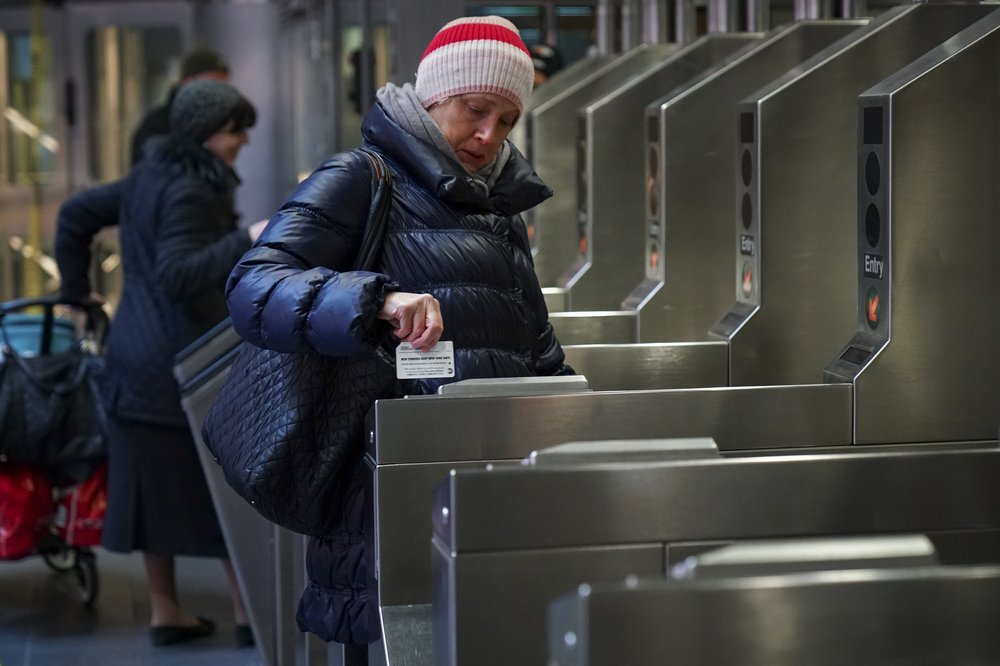MTA to stop selling MetroCards by end of 2025 as NYC transit fares move to OMNY
March 19, 2025, 11:38 a.m.
The phase out of the old vinyl swipe cards comes after the MTA's rollout of its tap-to-pay fare system faced years of delays.

It’s the end of an era in New York City’s subways.
The MTA plans to stop selling MetroCards by the end of the year, MTA Chair Janno Lieber said Wednesday.
The deadline marks the latest step in the MTA’s conversion to collecting all subway and bus fares through its OMNY tap-to-pay system. MTA officials said riders can still use their existing MetroCards to pay their fares until the end of 2026. After that, the subway swipe will go the way of the dodo.
“After 32 years, it’s time to say goodbye to the MetroCard and go all in on the fare payment system of the future,” MTA Chair Janno Lieber wrote in a statement.
The MTA plans to deploy vending machines that allow riders to buy and reload plastic OMNY cards at every subway station by the fall. Currently, most subway and bus riders use their credit cards or smartphones to pay their fares with OMNY.
The MTA in 2017 inked a $573 million contract with the company Cubic to install and roll out the OMNY system, and initially planned to phase out the MetroCard by the end of 2023. That deadline was delayed by two years due to the COVID-19 pandemic and manufacturing setbacks with the new OMNY vending machines. The cost of the contract ballooned to more than $700 million due to the delays.
MTA spokesperson Joana Flores said the new end date to MetroCard sales will align with the rollout of at least one OMNY vending machine in every subway station by the fall of this year.
The MTA does not offer unlimited seven- or 30-day transit passes through OMNY. Riders who use the same smartphone or credit card to pay for their rides are charged no more than $34 — the cost of a weekly MetroCard — every seven days due to an MTA program, but the agency has no similar alternative for its monthly passes.
MTA officials did not say whether the 30-day unlimited passes would disappear alongside the MetroCard. The agency’s board is slated to approve a fare hike later this year, which could also end the 30-day pass option.
The MTA in a press release argued the unlimited 30-day MetroCards actually cost riders money, stating "there is $40 million of fare value underutilized annually from weekly and monthly MetroCards."
"By switching to tap-and-go, customers do not have to pre-pay for multiple trips to receive a discount and forfeit what they don’t spend," the release said.
The MetroCard first debuted in 1993, allowing the MTA to phase out subway tokens. The vinyl swipe cards gave riders the first-ever unlimited weekly and monthly subway passes. Before its advent, New Yorkers had to purchase a token for every single ride.
Why OMNY readers at the back of MTA buses are effectively useless right now